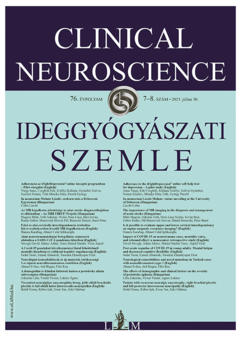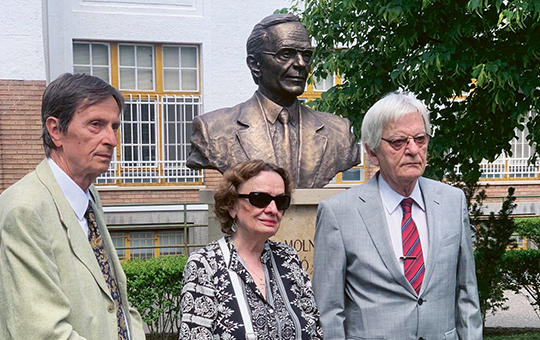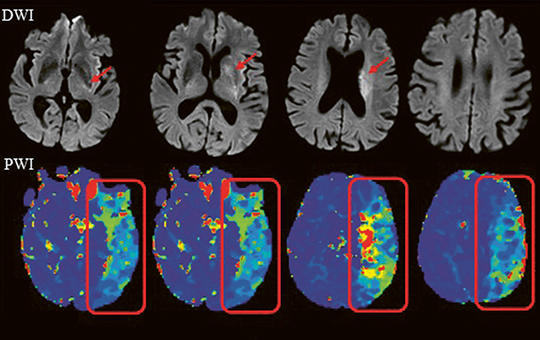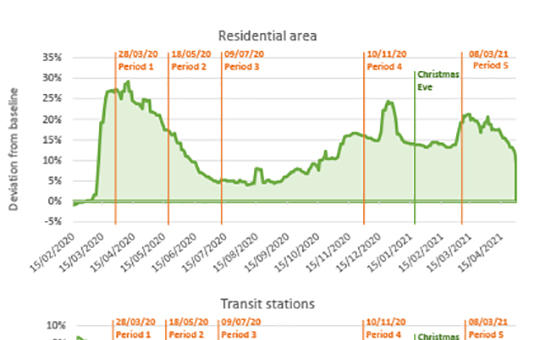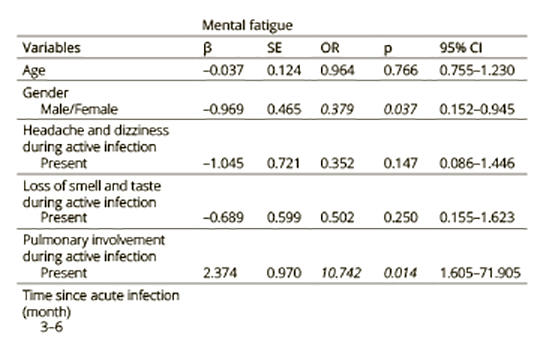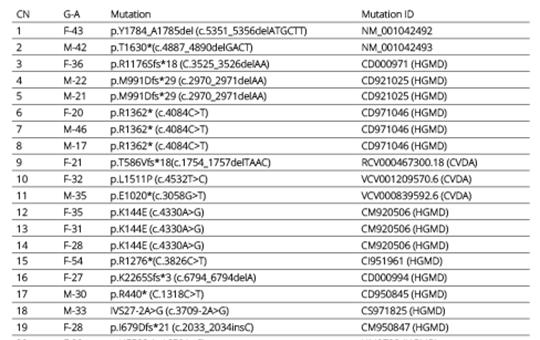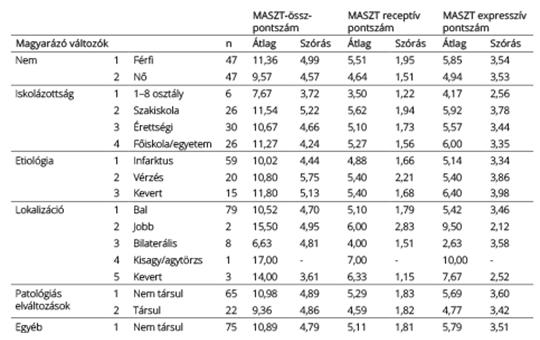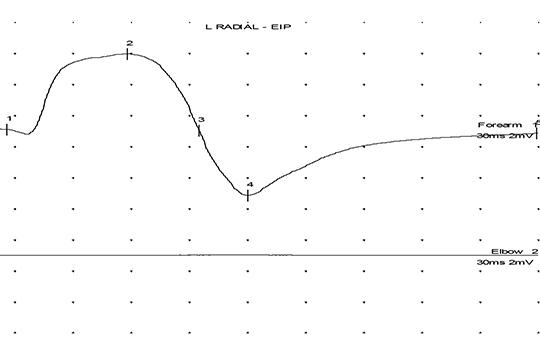The eLitMed.hu medical portal uses computer cookies for convenient operation. Detailed information can be found in the Cookie-policy.
Clinical Neuroscience - 2023;76(7-8)
Content
Adherence to the iFightDepression® online self-help tool for depression – A pilot study
The aim of the current observational study was to examine the level of adherence of Hungarian patients suffering from depression, using iFightDep ression (iFD) guided online selfhelp tool with and without an extra weekly phone call support as well as identifying the predictors of adherence. Our hypotheses were: the additional weekly phonecalls would increase the adherence with the online selfhelp tool.
[In memoriam László Molnár: statue unveiling at the University of Debrecen]
[Professor László Molnár was born in 1923. He completed his university studies in Szeged and continued his clinical work in Pécs. He qualified as a neurologist, psychiatrist and neurosurgeon. He first studied the regulation of cerebral blood circulation in animal experiments in Germany, and then worked in Paris as a fellow with Professor Seylaz. He obtained his doctorate at the Sorbonne. He obtained his Candidate’s thesis in 1966 and his Doctorate in 1977. Between 1969 and 1992 he was Head of the Neurological Clinic of the University of Debrecen, where he studied the consequences of focal ischemia in animal experiments. In Debrecen he founded the Cerebrovascular Department, the second in Europe to specialize in the care of stroke patients. Eleven of his staff became senior physicians, four became university professors, and six received PhDs and three MTA doctorates. He died in 1999.]
[The importance of MR imaging in the diagnosis and management of acute stroke ]
[In our collaborative project, called MRI First!, every patient arriving with neurological symptoms of acute stroke and without contraindications was examined by MRI. Our aim was to detect the symptomatic lesions, to obtain appropriate information about the brain parenchyma and to analyse parenchymal perfusion and brain vasculature. The examinations were conduc¬ted on a Philips Ingenia 1.5 Tesla scanner with the following protocol. ]
Is it possible to evaluate upper and lower cervical interdependency on supine magnetic resonance imaging?
There is a significant correlation between the upper and lower cervical alignments associated with a compensatory mechanism to maintain horizontal gaze. Evaluating this correlation before cervical fusion operations is essential, particularly in the upper cervical region, to prevent the occurrence of postoperative malalignment. This study included 36 male and 30 female volunteers without symptoms aged between 16 and 60 years.
Impact of COVID-19 on neurotrauma cases, mortality rates, and rebound effect: a monocenter retrospective study
We retrospectively studied the development of neurotrauma case numbers during the COVID-19 pandemic in the largest trauma center in Hungary and compared them to the data of the previous year. We hypothesized that the decrease in the number of neurotrauma cases during the restrictions would subsequently lead to a significant increase in a so-called rebound phenomenon. Our goal was to better understand the effect of the pandemic.
Post-acute sequelae of COVID-19 in young adults: Mental fatigue and decreased cognitive flexibility
Post-acute sequelae of COVID-19 (PASC) describes the occurrence of persistent symptoms following COVID-19 infection. Neurological and psychiatric symptoms may include fatigue, post-exertional malaise, cognitive complaints, sensorimotor symptoms, headache, insomnia. The aim of this study was to evaluate the long-term effects of COVID-19 infection on mental fatigue and cognitive flexibility in young adults.
Neurological comorbidities and novel mutations in Turkish cases with neurofibromatosis type 1
Neurofibromatosis type 1 (NF1) is a rare, autosomal dominant multisystemic disease. The NF1 gene is localized on chromosome 17q11.2. Patients with NF1 have different clinical presentations and comorbidities. The aim of the present study is to determine the novel mutations and neurological comorbidities of NF1. Patients who were diagnosed with NF1 by clinical criteria of the National Institutes of Health were included in the study.
[The effects of demographic and clinical factors on the severity of poststroke aphasia]
[Poststroke aphasia severity is related to several demographic, lesion-specific, and clinical factors. However, results about the importance of these factors are controversial. The aim of the current study was to investigate the effects of demographic and clinical factors on aphasia severity as well as on expressive and receptive language skills in a sample of Hungarian-speaking people with aphasia.
Ninety-four people with aphasia with mainly unilateral left-hemisphere stroke (87.88%) participated. We used multiple stepwise linear regression to investigate the relationships between potential predictors – i.e., sex, education, time postonset, etiology, lesion localisation, pathological changes in the brain caused by small vessel disease, and other neurogenic communication disorders/swallowing disorders – and language outcome. As outcome variables, we used the total score, the receptive score, and the expressive score of the Hungarian Aphasia Screening Test.
Less years of education, pathological changes in the brain (white matter hypodensities/hyperintensities and subcortical lacunar lesions) and apraxia of speech were associated with more severe aphasia. Pathological changes and apraxia of speech were also associated with lower expressive language skills in aphasia. Finally, education, pathological changes, and sex predicted receptive language skills in poststroke aphasia (p < 0.05 in all three models).
Pathological changes, apraxia of speech, education, and sex may affect language outcome in poststroke aphasia. We discuss our findings in light of the results of previous studies. ]
Patient with recurrent neuralgic amyotrophy; right brachial plexitis and left posterior interosseous neuropathy
Neuralgic amyotrophy (NA), also known as Parsonage-Turner syndrome or idiopathic brachial plexopathy, is a multifocal inflammatory neuropathy that usually affects the upper limbs. The classic picture is a patient with acute onset of asymmetric upper extremity symptoms, excruciating pain, rapid onset of multifocal paresis often involving winged scapula, and a monophasic course of the disease.
1.
Clinical Neuroscience
[Headache registry in Szeged: Experiences regarding to migraine patients]2.
Clinical Neuroscience
[The new target population of stroke awareness campaign: Kindergarten students ]3.
Clinical Neuroscience
Is there any difference in mortality rates of atrial fibrillation detected before or after ischemic stroke?4.
Clinical Neuroscience
Factors influencing the level of stigma in Parkinson’s disease in western Turkey5.
Clinical Neuroscience
[The effects of demographic and clinical factors on the severity of poststroke aphasia]1.
2.
Clinical Oncology
[Pancreatic cancer: ESMO Clinical Practice Guideline for diagnosis, treatment and follow-up]3.
Clinical Oncology
[Pharmacovigilance landscape – Lessons from the past and opportunities for future]4.
5.
